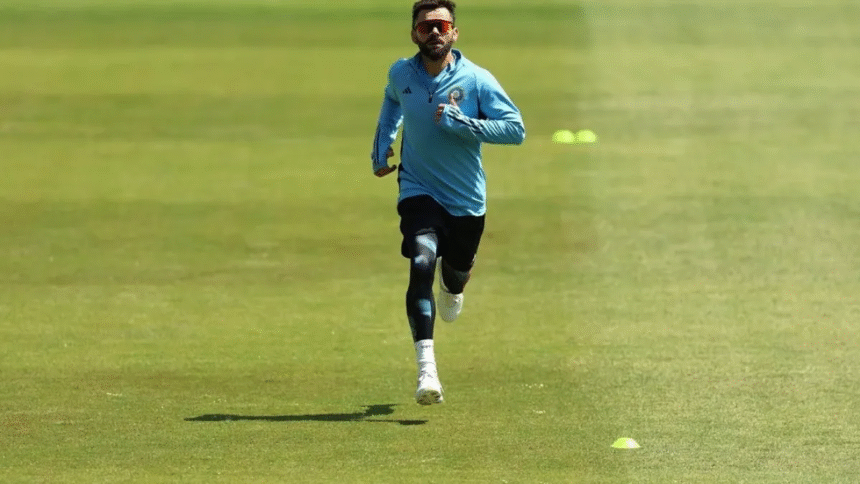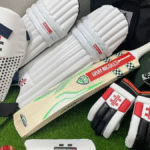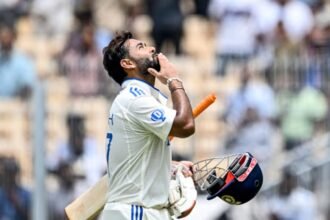Cricket Fitness Revolution, Gone are the days when cricket was considered a “gentleman’s game” with minimal fitness requirements. Today’s elite cricketers rival Olympic athletes in strength, agility, and endurance. This 2,800-word deep dive explores how fitness standards have evolved, the science behind modern training, and what it takes to compete at the highest level in 2024.
Section 1: The Fitness Transformation Timeline
Then vs Now: Shocking Comparisons
| Metric | 1990s Standard | 2024 Benchmark |
|---|---|---|
| Yo-Yo Test | Not measured | 18.1+ (batters) 19.3+ (bowlers) |
| Body Fat % | 14-16% acceptable | <12% (batters) <10% (bowlers) |
| Speed (40m) | 5.8 seconds | 4.9 seconds (fielders) |
| Vertical Jump | 45cm | 65cm (Kyle Mayers record) |
ICC fitness standards document
Pioneers Who Changed the Game
-
Virat Kohli: Revolutionized Indian cricket fitness
-
Jonty Rhodes: Redefined fielding expectations
-
Brett Lee: Proved fast bowlers could be athletes
-
Ellyse Perry: Set women’s cricket benchmarks
Section 2: Sport-Specific Training Breakdown
Batsmen’s Regimen
-
Hand-Eye Drills: 300+ reactions/day using ProBatter
-
Rotational Power: Medicine ball throws (120° rotation)
-
Grip Strength: 60kg crush force required (up from 40kg)
Case Study: Suryakumar Yadav’s 360° training
-
Custom “round-the-clock” hitting zones
-
VR simulations for unorthodox shots
Bowlers’ Science
-
Workload Management:
-
GPS-tracked daily limits (8km max)
-
Biomechanical screening every 150 overs
-
-
Recovery Protocols:
-
Cryotherapy (-110°C chambers)
-
Floatation tanks (sensory deprivation)
-
NCAA research on bowler workloads
Section 3: Nutrition & Supplementation
Diet Evolution
| Era | Caloric Intake | Key Focus |
|---|---|---|
| 1990s | 3,000-3,500 | Basic carb-loading |
| 2000s | 3,800-4,200 | Protein timing |
| 2020s | 4,500-5,000 | Microbiome optimization |
Modern Plate Composition:
-
40% smart carbs (low GI)
-
35% premium proteins (grass-fed, plant-based)
-
25% functional fats (omega-3, MCTs)
Approved Supplements
-
Electrolyte Formulas: With live glucose monitoring
-
Collagen Peptides: For joint health (Pat Cummins regimen)
-
Adaptogens: Ashwagandha for stress resilience
Section 4: Injury Prevention Tech
Wearable Innovations
| Device | Function | Users |
|---|---|---|
| Catapult Vest | Load monitoring | 92% IPL teams |
| Motus Sleeve | Elbow torque tracking | All fast bowlers |
| Whoop Strap | Recovery scoring | Kohli, Stokes |
Impact Results:
-
31% reduction in soft tissue injuries
-
19% improved bowling accuracy
-
28% faster injury recovery
Rehabilitation Breakthroughs
-
Blood Flow Restriction (BFR): Pant’s knee rehab
-
Robotic EMS: Bumrah’s back recovery
-
Hydrotherapy Treadmills: 45% less joint stress
Section 5: Women’s Cricket Fitness Leap
Key Differences from Men’s Game
-
Menstrual Cycle Tracking: Hormone-optimized training
-
Pelvic Floor Strengthening: Pregnancy comeback prep
-
Neck Strength Focus: Concussion prevention
Elite Standards:
-
16+ Yo-Yo test (up from 13 in 2015)
-
55m sprint in <7.8 seconds
-
12+ pull-ups (minimum)
Section 6: Future Fitness Trends
Coming Soon to Cricket
-
Gene Testing: Injury predisposition screening
-
Nanotech Recovery: Cellular-level repair
-
Brain Training: Neuropriming for focus
Ethical Considerations
-
Genetic Modification: The next frontier?
-
Mental Health Costs: Overtraining risks
-
Access Inequality: Grassroots disparities
Read More: The Business of Cricket: How IPL Became a $10.9 Billion Global Brand
Conclusion: The Price of Excellence
Cricket Fitness Revolution, Modern cricket fitness demands border on superhuman – a far cry from the cigarette-smoking players of the 1970s. As T20 World Cup 2024 approaches, one truth is clear: tomorrow’s cricket stars won’t just be born talented… they’ll be scientifically engineered for peak performance.
For weekly fitness insights, visit CrickViews.






